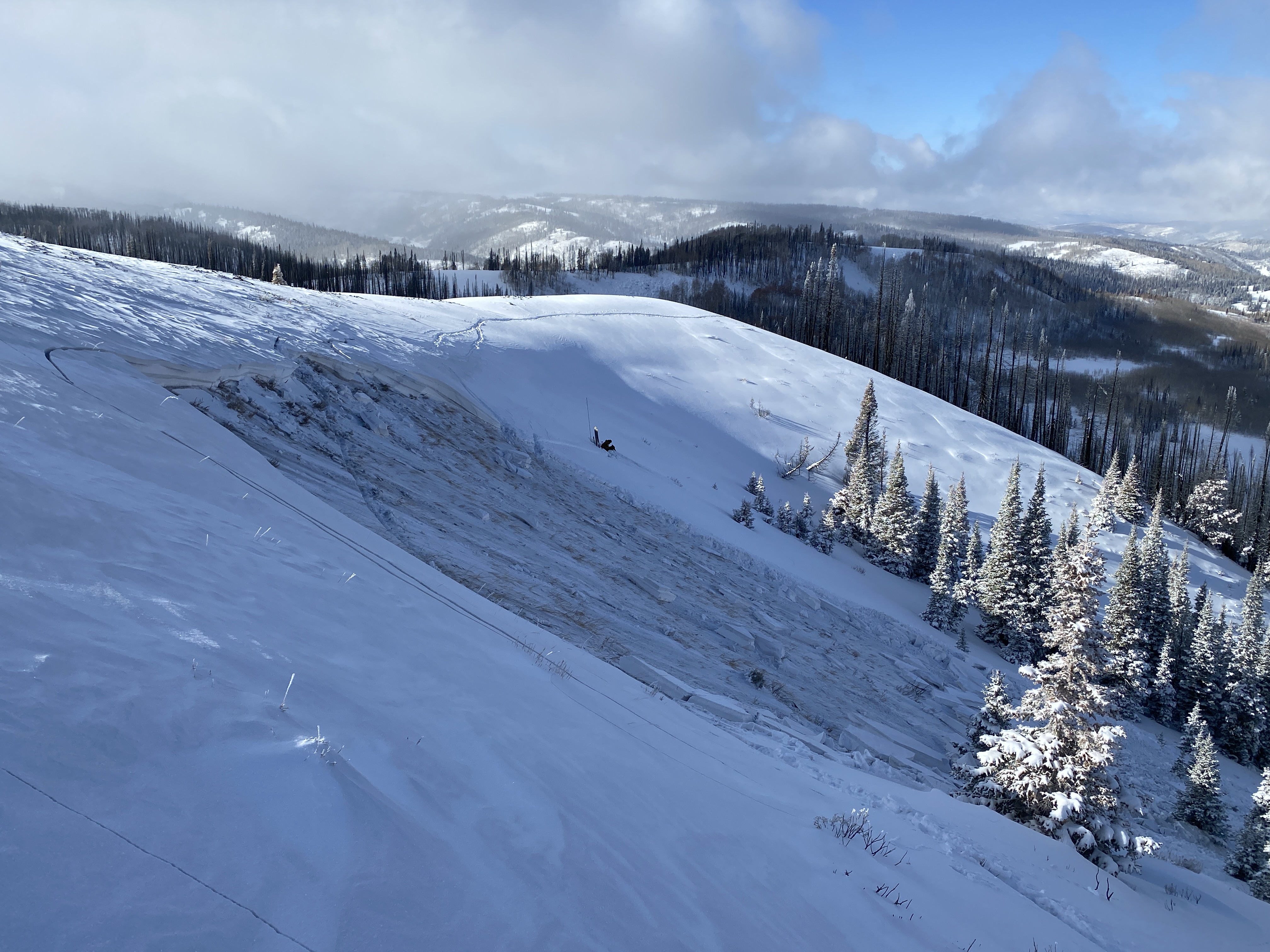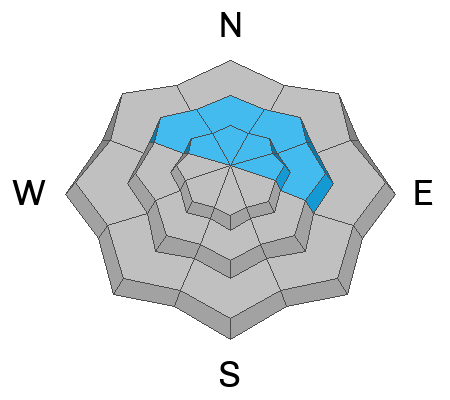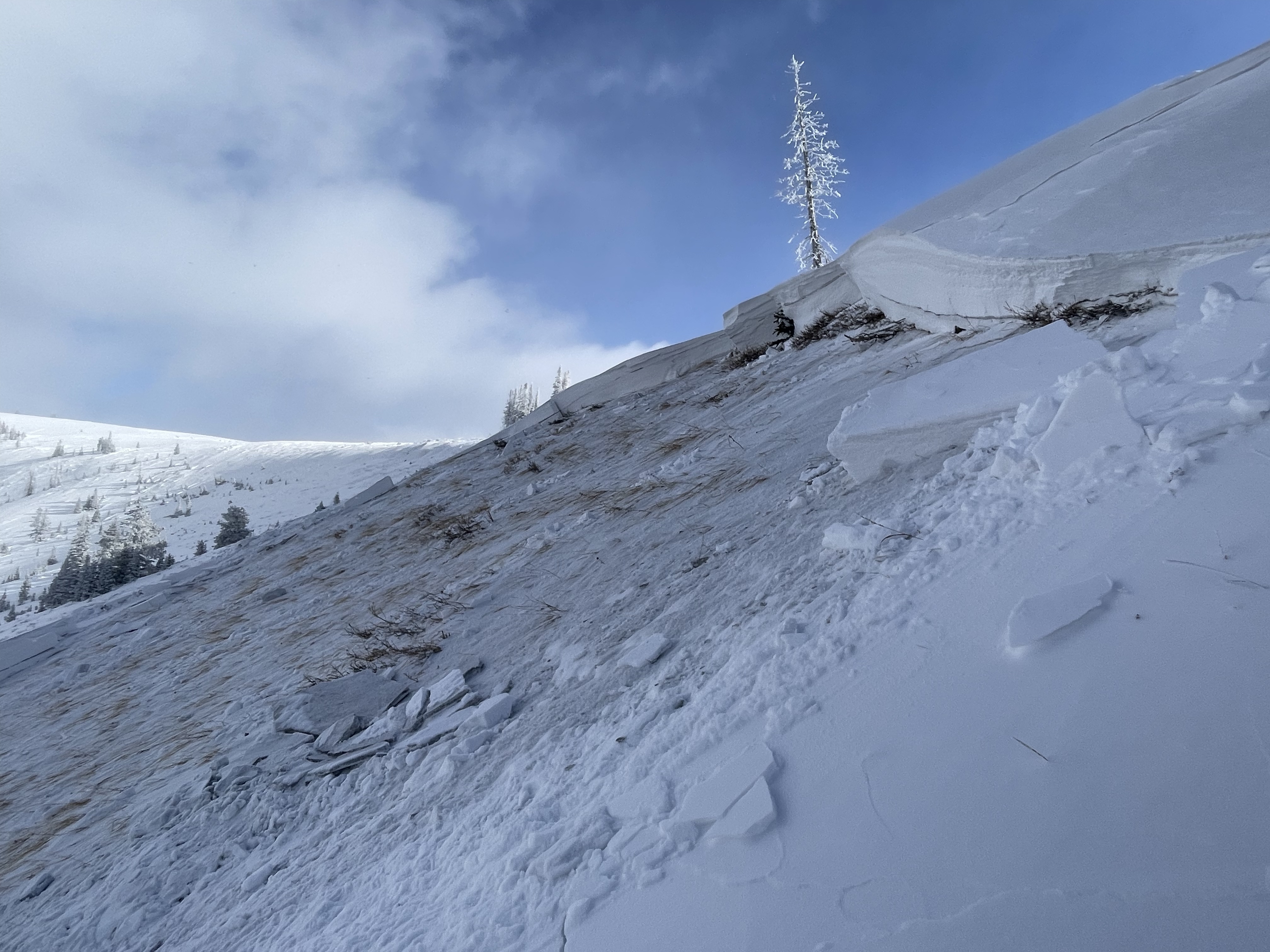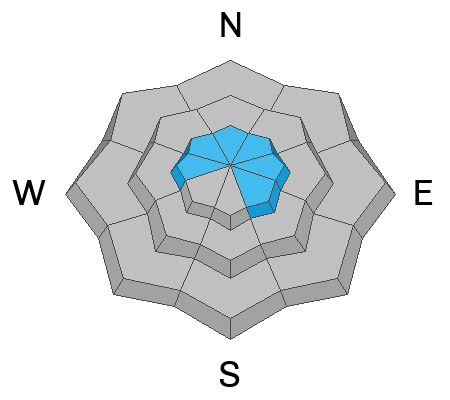Forecast for the Uintas Area Mountains

Issued by Andrew Nassetta on
Thursday morning, November 28, 2024
Thursday morning, November 28, 2024
Avalanche danger is MODERATE above treeline on steep, wind loaded slopes facing west through southeast. It is POSSIBLE that today’s avalanches can be triggered by a human and break 1-3’ deep.
Areas where the snowpack is shallow, less than a couple feet, display a lot of red flags like shooting cracks and audible collapses. In areas where the snowpack is deeper, or a stiff wind drift is in place, you may see less obvious signs of instability.
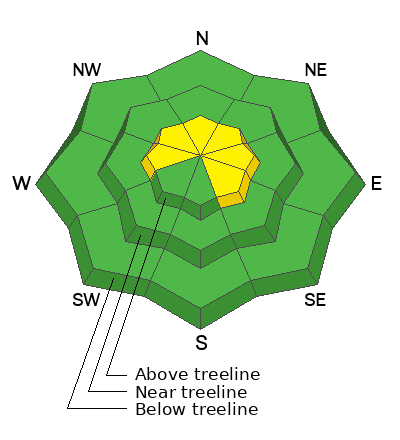
Low
Moderate
Considerable
High
Extreme
Learn how to read the forecast here


